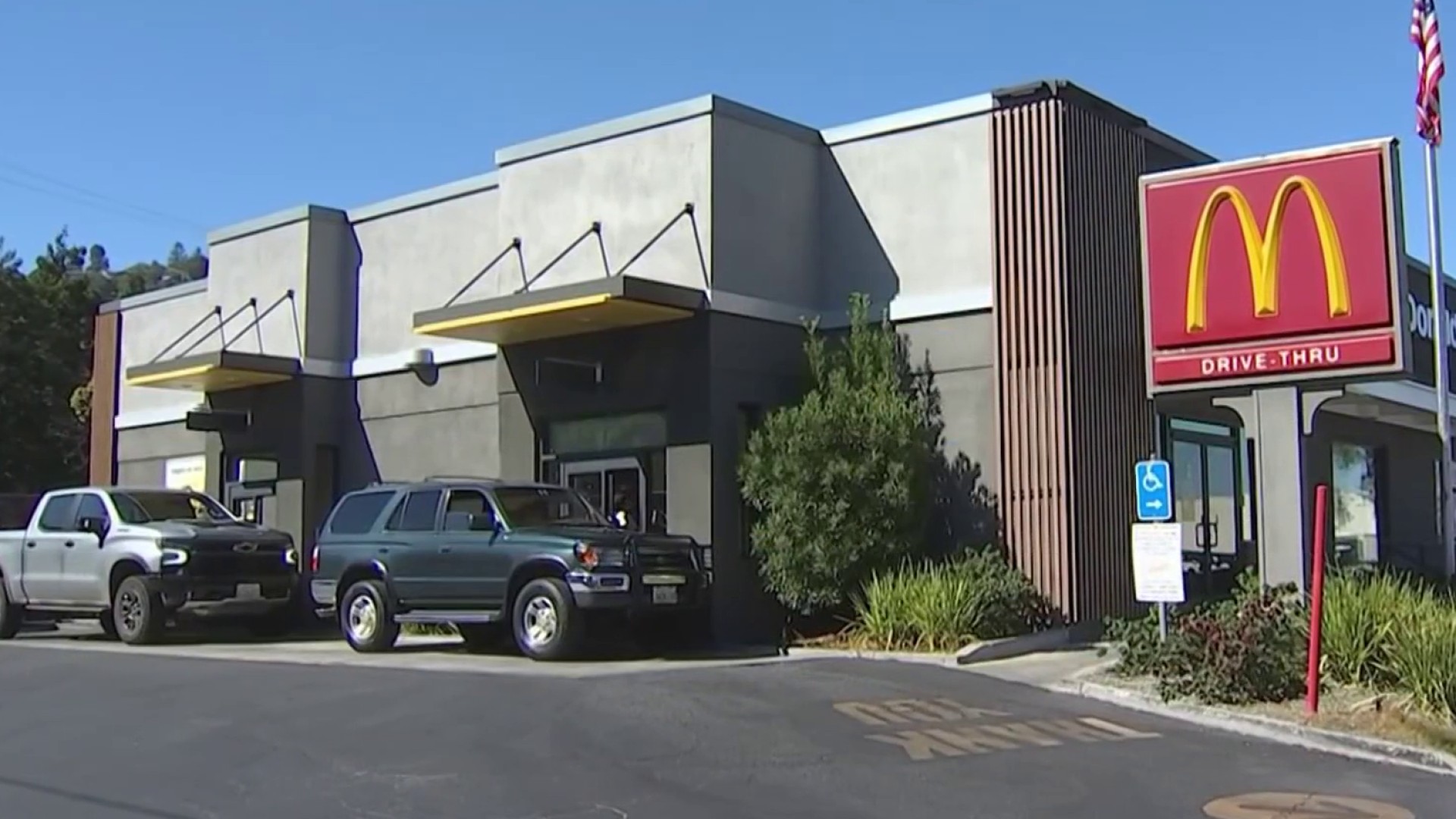Ronald Lum left San Quentin in July with a coronavirus outbreak raging behind him and three death letters in his hand.
The letters’ authors were not, in fact, dead.
One was a letter written to his family by Lum himself when he was still locked up and the virus was leaping from person to person around him.
The other two letters came from men sick with COVID-19 in nearby cells, who passed the letters to Lum before he left prison. If the men died, it was Lum’s job to get those letters to the men’s families.
“They had already given them to me because I had seemed like I would last the longest,” Lum said.

Thirteen people have died at San Quentin and more than 2,000 prisoners – more than half the prison’s population – have contracted COVID-19 since June. Those numbers are likely low as many prisoners have refused to be tested. As of Monday, 234 staff members have also tested positive.
National Investigations
Fortunately, the number of active cases at the prison is now on the downswing, dipping below 1,000 this week from a high of more than 1,400.
But those who spoke out said it never had to get this bad.
Lum was one of more than fifteen people either working or incarcerated at San Quentin State Prison who spoke to NBC Bay Area during one of the worst COVID-19 outbreaks in the state.
The themes throughout those stories were consistent: A prison system perpetually several steps behind the fast-moving virus, incarcerated people enduring poor conditions as more than half their ranks contracted the virus, and exhausted prison staffers working round the clock to manage a crisis that was, by all accounts, unmanageable.
Unmanageable, they said, because California’s oldest prison doesn’t lend itself to infection control, because the state’s reaction was slow and heavy handed, and because San Quentin, like many California prisons, is overcrowded and was well over its designed capacity when the virus gained an unshakeable foothold behind its walls.
“The whole place has barely held together,” said a San Quentin nurse who spoke to NBC Bay Area on the condition of anonymity. “By a hope and a prayer.”
Coronavirus Arrives at San Quentin
One of the most maddening parts of this story to those who lived through it is how COVID-19 arrived at San Quentin on a bus from Chino.
The California Institution for Men was going through a bad Coronavirus outbreak in May and prison officials made the call to transfer medically fragile prisoners out of harm’s way by bussing 125 men to San Quentin.
But the men, prison officials later conceded, had not been tested for several weeks prior to the transfer, and some brought the virus with them. The incident was covered extensively by the San Francisco Chronicle.
San Quentin staff members and prisoners alike recall being shocked when learning of the transfer.
“I’m told literally there is on the road heading towards San Quentin 125 inmates from one of the most COVID-infested prisons in the state,” another San Quentin nurse told NBC Bay Area. “And they didn’t even tell us for security reasons.”
Jesse “Juice” Johnson was in a San Quentin reception center known as Badger section awaiting a transfer up to Pelican Bay when the men from Chino were placed there. He soon contracted COVID-19.
“They should have gotten us out before they brought these prisoners from Chino,” Johnson wrote in a letter to his fiancé while locked down in Badger section after the virus began to spread there. “Chino was closed because there were too many cases of the virus.”
People inside San Quentin said the mistake was compounded by the constant movement of incarcerated people and prison staff once the virus arrived.
“Officers would work on one side, then work on our side at the next shift,” said Robert Kuhl, who contracted the virus before being released about two weeks ago.
He spoke to NBC Bay Area while quarantined for 14 days in an Oakland motel.

“Officers weren’t really wearing their masks, no gloves, and they have to give us our trays, so it’s hand-to-hand when they’re giving us our food,” Kuhl said.
'The House Has Already Burned to the Ground'
A prison nurse said the constant movement made the virus impossible to contain.
“It’s like this Keystone Cops thing where they’re trying to isolate it, but their reaction was to move people around even more,” the nurse said. “And the more you move people around, they just spread it all over the prison.”
Nurses said PPE was in short supply early in the crisis and said an exhausted medical staff was pushed to its limit.
“Access to PPE within San Quentin State Prison, as well as other prisons, has been widely dismal at best,” said San Quentin nurse Karen Franklin at a State Senate hearing on July 1.
“We need help now,” Franklin said. “Please. Every day I see more and more of our staff testing positive for COVID-19, even though we personally try our best to protect ourselves. It does not feel like the department has done what is needed to protect us.”
Another nurse described the efforts of San Quentin’s medical staff as the biggest untold story of the outbreak.
“The vast majority of staff are truly heroic,” the nurse said. “The vast majority of staff are showing up day after day.”
“I’m actually shocked at how hard people are working, how they’re responding, knowing that they have families at home and they could be bringing this home.”
While the nurse lauded the efforts of staff fighting the outbreak in the trenches, they said prison officials in Sacramento responded too slowly to the outbreak and failed to communicate effectively with boots on the ground staff.
“In terms of this pandemic response, it’s just exposed the weakness in the system,” the nurse said.
By the time prison officials had created more bed capacity, beefed up staffing, and ramped up testing, the nurse said it was already far too late to contain the virus.
“It’s not like the house is on fire,” the nurse said. “The house has already burned to the ground.”
Another nurse echoed the frustration with upper echelon officials.
“Management has created a broad network of dysfunction,” the nurse said. “[They] have not responded in any substantive way to our concerns over so many years.”
Prison officials in Sacramento have so far declined interview requests from NBC Bay Area but said in a statement that CDCR and California Correctional Health Care Services have, “implemented extraordinary measures to protect staff, the incarcerated population, and the community at-large.”
“At San Quentin, CDCR and CCHCS have worked closely with state and local public health, health care, and emergency response agencies to quickly mitigate the spread of COVID-19 within the institution and treat those requiring medical care. This includes standing up a 220-bed alternative care site on San Quentin grounds, erecting additional medical triage tents for those in need of medical isolation, providing all staff and the incarcerated population with N95 respirators, sending tens of thousands of additional pieces of personal protective equipment to San Quentin, and sent hundreds of additional custody and health care staff to help the prison assign staff to specific areas on a consistent basis to limit movement between housing units.”
On Monday, CDCR Secretary Ralph Diaz and Federal Receiver J. Clark Kelso published this video message to incarcerated people discussing the state's COVID-19 response in California prisons.
Incarcerated People Call for Help
As front-line medical workers tried to hold the line against a virus that would sweep through nearly the entire prison, NBC Bay Area gathered more than a dozen accounts from those incarcerated at the prison, many of whom contracted COVID-19.
“The conditions they have us in are deplorable,” said Michael Adams in a phone call to NBC Bay Area. “They have two people to a cell. There’s no electricity, although they’re trying to rectify that. We’re not getting any hot meals.”
Because the prison was on medical quarantine, people incarcerated at San Quentin told NBC Bay Area they were locked in cells for 23 or 24 hours a day for weeks at a time.
“Depression starts in, you start to sleep more,” said one incarcerated person who did not want to be identified by name.
In many cases, according to those we spoke to, even people who tested positive for COVID-19 were kept in a cell with another person.
“We’re double celled, which was another mind-boggling part of this whole puzzle,” said Christopher “Max” Hickson, who tested positive for COVID-19 and was quarantined in Badger section.
Hickson went on a multi-day hunger strike to protest the conditions, he said. The prison stopped serving hot meals and the cells where quarantined prisoners were placed lacked electric power, so people couldn’t plug in electric appliances or heat their food and water.
“We still have rights,” said Tony Rodriguez, a prisoner on San Quentin’s Death Row, where he said most people have contracted the virus. “They’re treating us like caged animals as if we don’t have rights.”
Rodriguez said at one point he had not been given a shower in nine days.
Of the 13 people who have died at San Quentin, six were prisoners on Death Row.
“How a person dies in prison says more about us as a society than it does about anything they did to get to prison,” said Marvin Mutch, Co-founder of the Humane Prison Hospice Project and Director of Advocacy for the Prisoner Reentry Project.
Mutch spent 41 years in prison after he said he was wrongfully convicted at the age of 18. He was released in 2016 with the help of USC’s Post Conviction Justice Project and The Golden Gate University Innocence Project. Now, he advocates for the men he got to know so well during his incarceration and is working to implement hospice programs in California prisons.
“Every time we allow someone to die chained to a bed, we’re shedding a piece of our humanity,” Mutch said.
Last week, prison officials cut off access to prison-authorized phones for everyone incarcerated at San Quentin, saying the move was to help prevent transmission of COVID-19.
But Mutch is skeptical.
“The best way to keep the public from knowing what’s going on behind these walls is to cut off all communication,” Mutch said.
Since the phone shutdown, calls to NBC Bay Area from people incarcerated at San Quentin have stopped.
But that hasn’t stopped people like Ronald Lum or Robert Kuhl, now out of prison, from speaking up.
Kuhl, expected to be released Wednesday from quarantine at an Oakland motel, said he came out of prison dirty and starving. Kuhl said he hadn’t had a shower in a week before leaving the prison, and said the cold meals were barely enough to subsist on.
“One day we got tired of having cold meals and we threw our trash from our cell out onto the tier,” Kuhl said.
While he’s happy to be out of San Quentin, Kuhl, who said he may now end up homeless, has an uncertain future in the world he’s coming back to.
He said he hasn’t been tested for Coronavirus since arriving at the motel and no program will accept him unless he tests negative.
“There’s no plan at this point,” Kuhl said. “I asked my probation officer if there’s any way I can go into a program, but who knows?



